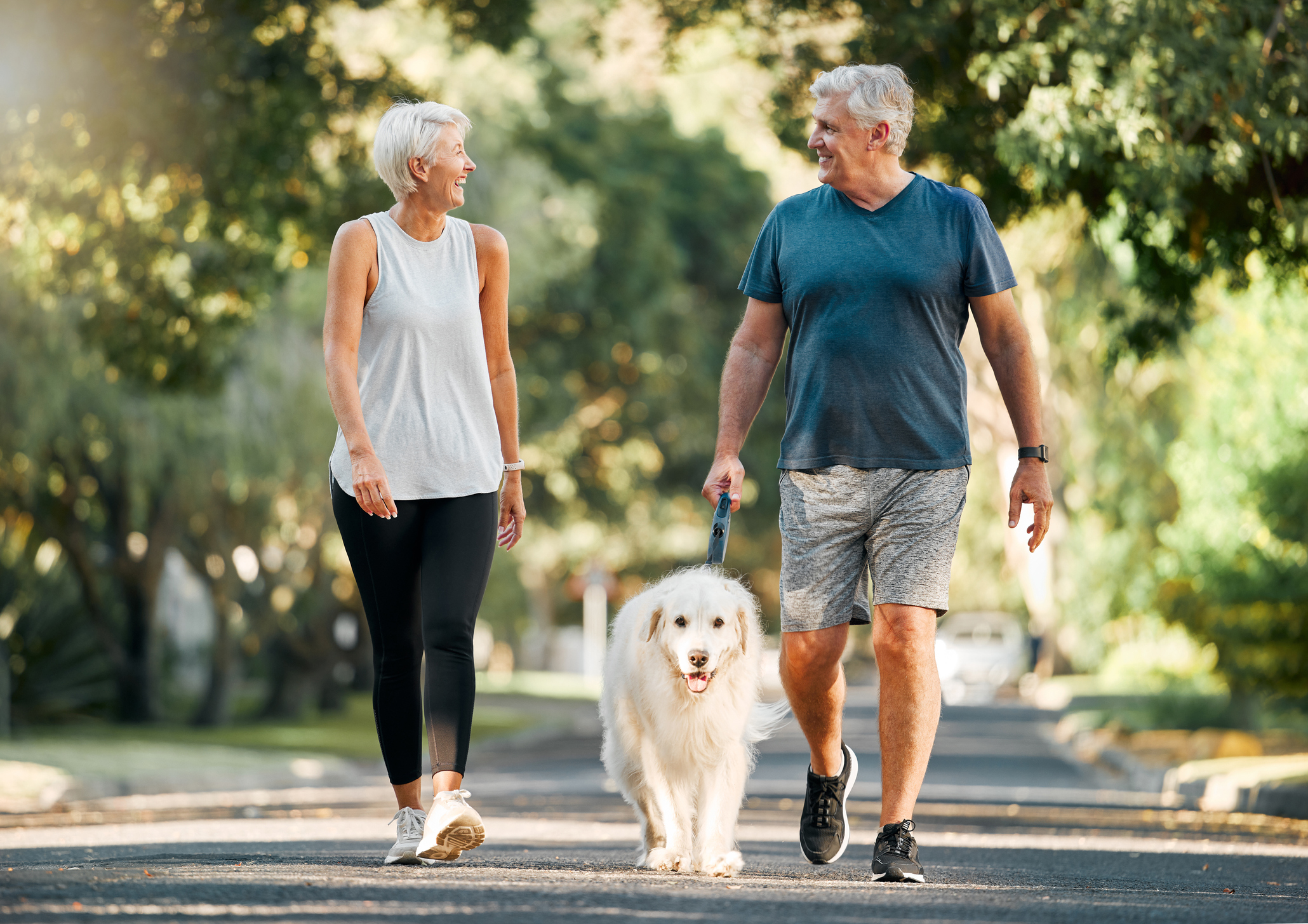
How much physical activity do older adults need?
As an older adult, regular physical activity is one of the most important things you can do for your health. It can prevent or delay many of the health problems that seem to come with age. It also helps your muscles grow stronger so you can keep doing your day-to-day activities without becoming dependent on others.
Keep in mind, some physical activity is better than none at all. Your health benefits will also increase with the more physical activity that you do.
Adults aged 65 and older need:
- At least 150 minutes a week (for example, 30 minutes a day, 5 days a week) of moderate-intensity activity such as brisk walking. Or they need 75 minutes a week of vigorous-intensity activity such as hiking, jogging, or running.
- At least 2 days a week of activities that strengthen muscles.
- Plus activities to improve balance, such as standing on one foot.
If chronic conditions affect your ability to meet these recommendations, be as physically active as your abilities and conditions allow.
Aerobic physical activity or “cardio” gets you breathing harder and your heart beating faster. Try a few of these activities:
- Mow the lawn or rake the leaves
- Learn a new dance
- Walk to the store
- Hike a trail
- Do active forms of yoga
- Ride a bike (stationary or outdoors)
- Join a water aerobics class
How do you know if you’re doing moderate or vigorous aerobic activity?
On a 10-point scale, where sitting is 0 and working as hard as you can is 10, moderate-intensity aerobic activity is a 5 or 6. It will make you breathe harder and your heart beat faster. You’ll also notice that you’ll be able to talk, but not sing the words to your favorite song.
Vigorous-intensity activity is a 7 or 8 on this scale. Your heart rate will increase quite a bit, and you’ll be breathing hard. You won’t be able to say more than a few words without stopping to catch your breath.
You can do moderate- or vigorous-intensity aerobic activity, or a mix of the two each week. Intensity is how hard your body is working during aerobic activity. A rule of thumb is that 1 minute of vigorous-intensity activity is about the same as 2 minutes of moderate-intensity activity.
Everyone’s fitness level is different. This means that walking may feel like a moderate-intensity activity to you, but for others, it may feel vigorous. It all depends on you – the shape you’re in, what you feel comfortable doing, and your health condition. What’s important is that you do physical activities that are right for you and your abilities.
Besides moderate or vigorous aerobic activity, you need to do things to make your muscles stronger at least 2 days a week. These activities will help keep you from losing muscle as you get older.
To gain health benefits, do muscle-strengthening activities to the point where it’s hard to do another repetition without help. A repetition is one complete movement of an activity, like lifting a weight or doing one sit-up. Try to do 8-12 repetitions per activity, which counts as 1 set. Try to do at least 1 set of muscle-strengthening activities, but to gain even more benefits, do 2 or 3 sets.
You can strengthen your muscles many ways, whether it’s at home or the gym. Choose activities that work all the major muscle groups of your body (legs, hips, back, chest, abdomen, shoulders, and arms). You may want to:
- Lift weights
- Work with resistance bands
- Do exercises that use your body weight for resistance (push-ups, sit-ups)
- Dig in a garden
- Do some yoga postures
Source: CDC


